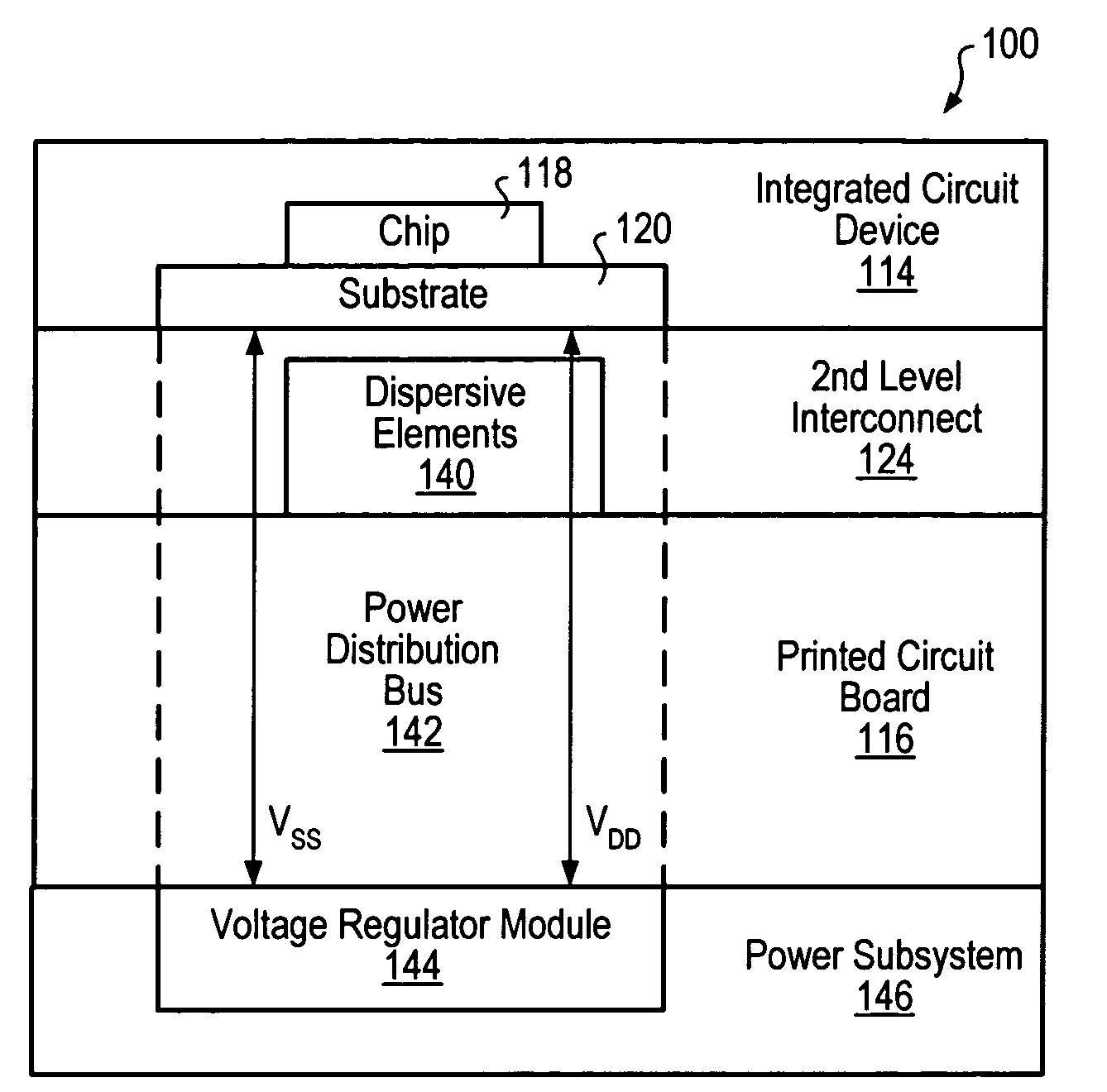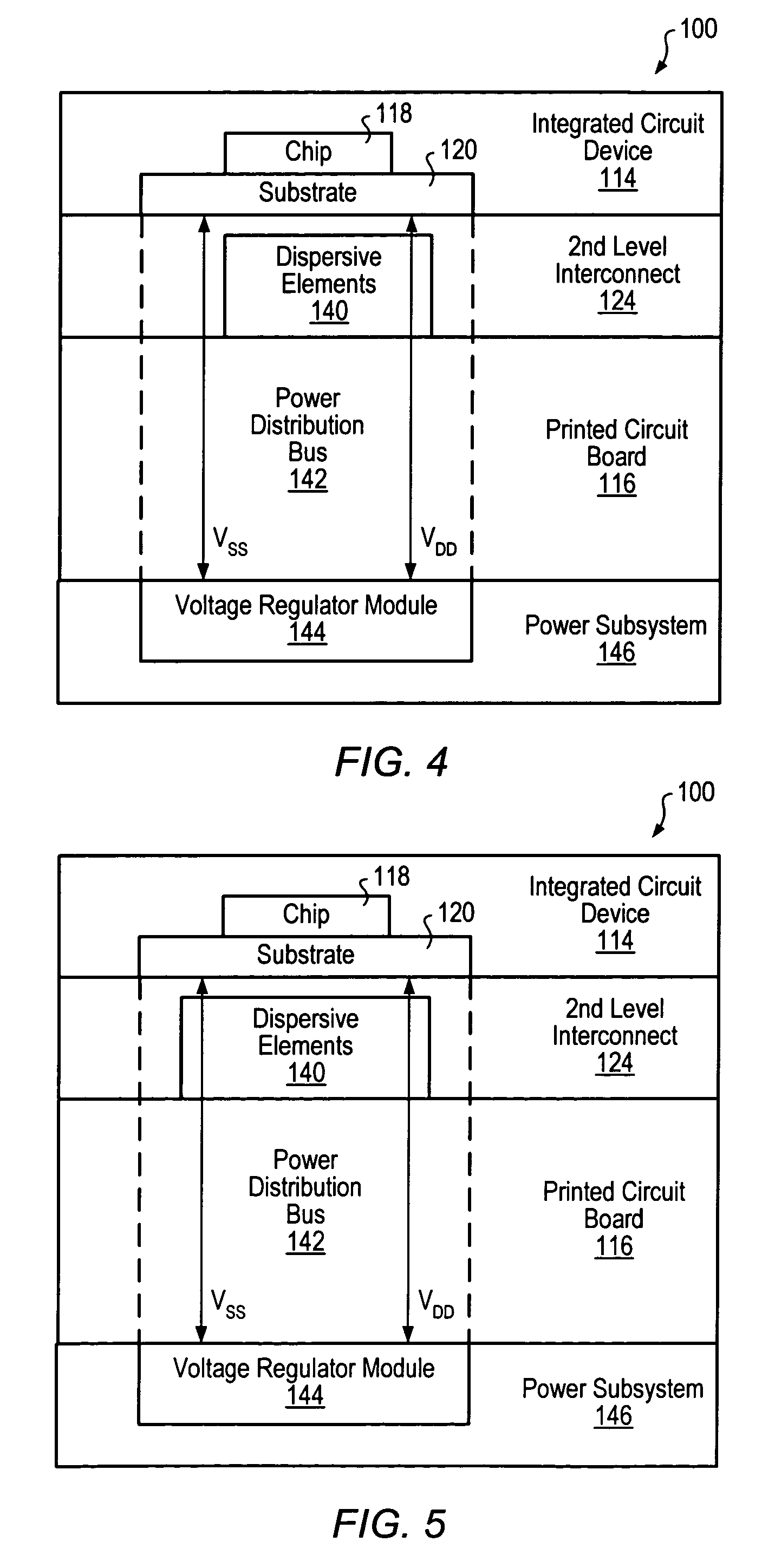Dispersive interconnect system for EMI reduction
a technology of emi reduction and interconnection system, which is applied in the direction of cross-talk/noise/interference reduction, transient suppressor details, and electrical apparatus construction details, etc., can solve the problems of affecting the overall performance of the system, emi, and interference with the individual performance of the device, so as to reduce the radiated emissions produced
- Summary
- Abstract
- Description
- Claims
- Application Information
AI Technical Summary
Benefits of technology
Problems solved by technology
Method used
Image
Examples
Embodiment Construction
[0025]The following description generally relates to apparatus and methods for reducing EMI in computer systems. Such systems and methods may be used in a variety of applications. A non-exhaustive list of such applications includes: telecommunications network server systems; e-commerce web server systems; LAN application and file server systems; personal computer systems; and remote vehicle control systems.
[0026]As used herein, “module” includes any modular unit or subsystem. Examples of a module include, but are not limited to, a printed circuit board assembly, an information-processing cartridge, a memory module, a power supply, or a combination thereof. In certain embodiments, a module may include multiple circuit boards (e.g., a mezzanine card mounted to a main circuit board). In certain embodiments, components of a module may be housed in an enclosure.
[0027]As used herein, “circuit module” includes any module that includes or carries elements of an electrical circuit, electrica...
PUM
 Login to View More
Login to View More Abstract
Description
Claims
Application Information
 Login to View More
Login to View More - R&D
- Intellectual Property
- Life Sciences
- Materials
- Tech Scout
- Unparalleled Data Quality
- Higher Quality Content
- 60% Fewer Hallucinations
Browse by: Latest US Patents, China's latest patents, Technical Efficacy Thesaurus, Application Domain, Technology Topic, Popular Technical Reports.
© 2025 PatSnap. All rights reserved.Legal|Privacy policy|Modern Slavery Act Transparency Statement|Sitemap|About US| Contact US: help@patsnap.com



